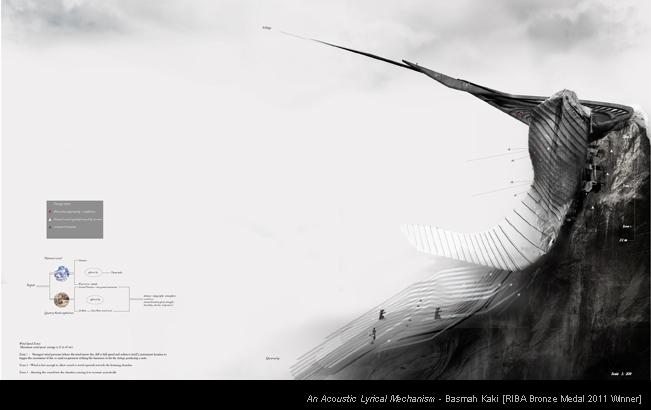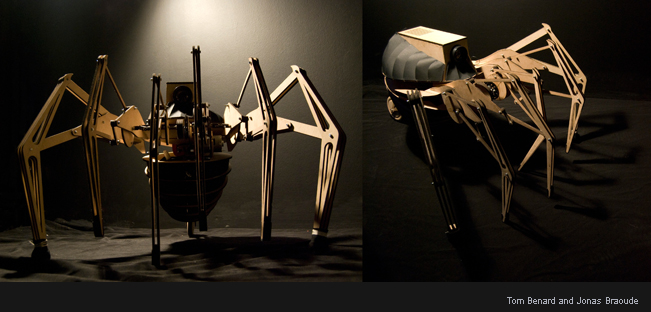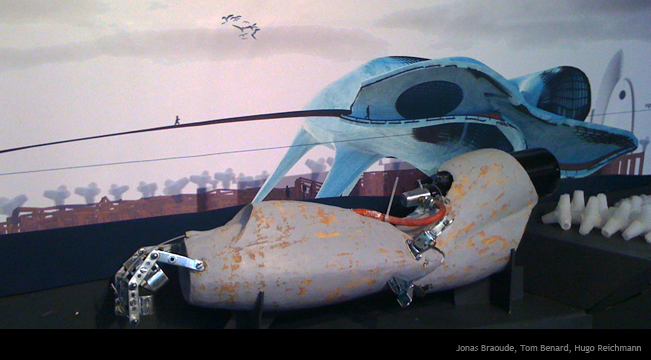Academic
-
Carving a Giant
Generational Phantoms explores relationships between digital technologies and social structures. Furthering last year’s understanding of cryptology as a way to generate architecture we specifically focused on the notion of the human body and its encryption into ornament.
Firstly students investigated how in recent decades the body has been a fundamental benchmark for encoding information into buildings – as proportion, ornamentation, but also to communicate social structures. Then, in order to expand the notion of the individual body to the idea of a collective or collaborative body, we voyaged to Rajasthan, India to experience places of production and to study its social structures, known as guilds.
Along the journey a few architectural corpses were uncovered and many digital autopsies effectuated, creating a dossier of projects where material and architecture go beyond the idea of the catalogue. Instead, material, technology and social networks opened new ways to new collaborations between the visible and the invisible.
-
Things that Never Were
‘When it comes, the culture of the Now will not oppose the present world as an invading army opposes its enemy, but rather as a new day overtakes the old – in the natural course of things, when the old world is tired and asleep and dreaming of this dawn.’ Lebbeus Woods
Even among the most sceptical minds it is normal to find some extra scepticism and anti-fairy dust when the agenda is imaginative architecture – as if such practice immediately anuls the reality of the ‘real’ world. But as the Dead Kennedys once sang, one only needs to spend a ‘holiday in Cambodia’ to experience a less jazzy dose of reality’s elasticity where one finds killing fields, a lake that is also a river changing current once a year, ‘smoky mountains’ (the capital’s open garbage dump), DIY bamboo trains and the slums made up of New Khmer Architecture buildings. Cambodia is made of the real and the painfully real, but it also holds a strangely real charm.
Flying cities, supernatural shrines, post-human temples, floating villages, underground fishing reservoirs, and we kid you not, New Jerusalem virtual nervous towers – within these fictive worlds, students searched for their own narratives and the possibility of turning them into a reality – an imaginative, hopeful and above all tangible one – at least as any good punk-fairy would.
-
Mystical Infrastructures or Formulas to Transform into a Snake
Six hours and 30 minutes upriver from Manaus, the capital of the Brazilian state Amazonas, we reach our destination: a once-glamorous town, now abandoned and infested by fire ants. The only inhabitant is a Japanese man. Soap opera blasts from a TV in his hut as he explains how one should unfold a hammock to avoid the ants. At 10pm the power generator shuts off, leaving only darkness and the progressive myth of the Amazon – a populated forest connected by drones and long-distance technology that lives as a dream-resource reservoir for the dream of preservation itself.
The notion of natural resources and how gate-cities operate is renewed by Manaus’ dedication to religious processions and its belief in Santa as a valued asset.
What is a resource? If the alchemical world operated as proto-science in its confusing clash of obscurantism and truth, would preservation be a proto-environmental phase? A transition stage? A moment of shift? If so, it is necessary to re-search for what the bricks and mortar of this transformational world could become.
-
Generational Phantoms
Generational Phantoms is set up as a design think tank on how rapid social and technological developments can work not only predatorily under market forces but also collaboratively.
Unit 18 discusses how long-circuits between generations can be ground for speculation but also long term investment. Amid digital dreams and social tense zones students designed their own tales of hope and wonder. As active engagement to imagine not the future but short-circuits in the present its main goal was to ‘hit the nerve’.
-
Post-Cyberpunk Codec
“In terms of the future well-being of our species, does it matter that we are replacing actual nature with technological nature?” Peter H Kahn, Jr
The public calls for urgent rebuilding, an increased food supply and faster infrastructural deployment while high above the suits call for calm and unity. The Left demands the preservation of humane zones amid radioactive fears, while from the Right, a parametric squad scripts a warfare plan for peaceful reconstruction and a prosperous future. Fast-forward two seasons: hackers, drones and wild monkeys equipped with sensors redraw the map of Japan based on radiation levels, while within temporary shelters in debris-filled wastelands portable game consoles and phone apps load the latest update of virtual girlfriends and companions – zero sociability.
-
Burning Wastelands
Moving away from heavy mainstream infrastructures students explored platforming technologies, unconventional laboratories and guerrilla compounds, partly commentary, partly speculative, partly culturally injected. We critically reviewed India’s sacred and scientific as well as high-tech and low-tech sides in order to understand and discuss via design the high-contrast scene and processes involved in energy extraction, exchange/transfer, manufacturing, final use/consumption and renewal/feedback loop.
Numerous time based prototypes were built throughout the year to test and explore energy relationships, effects and performatic behaviours. Digital and analogue, fabricating and DIY techniques were used in order to hack and tinker daily live objects from electronic toys, antique mobile phones, vintage computers and musical instruments. From these experimentations some strange-behaving creatures emerged which later on turned into fine tuned wonderful designs that dream, dance, live/die, grow and sing, forming peculiar ecologies of novel energy-beings.
-
Worlds from Words IV – DIY Suns
This semester the atelier investigated energy relationships based on techno-social environments. In this noir thriller investigation crimes of sustainability involved strange characters – energy mega waste, kilowatt corrupts and heartbeat junkies – in search of expression and tolerance between humans and space.
Students investigated alternative zones of energy relationships experimenting on how people viscerally relate to natural and urban resources. Waste and abundance energy concepts were spread in the field of human emotions. What is energy laziness, energy narcissism or energy passion and what would be the space for it?
Concepts of urban impact and participation were essential to create experiments and spaces. The final result is a process and an unfinished conversation. As a process of interaction and time based architecture this novel ecology of beings only works when talked to. In this sense energy is an exchange between systems, humans and environment, unfinished and collective.
-
Worlds from Words III – Rebel Delirium
The atelier aims to introduce contemporary concepts of narrative (time) architecture to create an augmented participative ecology. A place where the fragility of human habitat meets our desire for knowledge, discovery and understanding in an ever-changing world.
Students investigated extreme possibilities of cultural manifestation via interactive environments. By the study of time based architecture we explored ecologies that can adapt to changing conditions in order to create an architecture imposed by behaviour and participation alongside living organism patterns. Students started off with manufacturing small-scale creatures that functioned either as garments, urban furniture or architectural component. Later on this Frankenstein ecology emerged as an architecture of biological and mechanical devices to survey, protect or simply tell stories about the urban context.
-
Myths of the Artificial
“Things need not have happened to be true. Tales and dreams are the shadow-truths that will endure when mere facts are dust and ashes, and forgot.“ The Sandman, Neil Gaiman
Focusing on life’s most precious resource: water, and its sacred and cultural aspects, Inter 3 leaped outside the dominant scientific strict approach to infrastructural ecologies and into the world of myths looking for fresh paths and inspirations. The paramount idea was to research the artificiality as an interface between man and nature, city and resources, culture and environment.
With the worlds largest democracy, India, as research ground, Inter 3 investigated new technological environments inhabited by traditional sensibilities and constructed an ecology of dreams, rituals and machines, a place of celebration and tolerance between past and future.
-
Worlds from Words II
Semester 5 . Ecole Speciale d’Architecture . Paris
Space exploration is not only the field of military research and blockbuster films. It is also the arena to debate and experiment on how human-mankind can survive using limited resources and how species can live symbiotically. Potentially space architecture and the creation of artificial scenarios can contribute significantly to the progress of a better life on Earth.
The semester started speculating about the relation between artificial environments and the human body. For the final project students investigated life in space and the design of an architecture that responds to specific conditions and requirements in space. From sustainable visions to atmospheric spaces and unique material studies the final projects reflected the richness of architecture possibilities on Earth.









